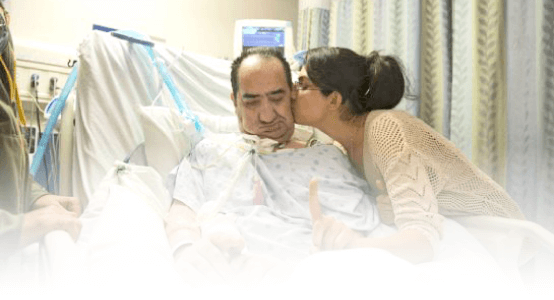Podcast: Play in new window | Download
Subscribe: Apple Podcasts | RSS
Hi, it’s Patrik Hutzel from intensivecarehotline.com with another quick tip for families in intensive care.
So currently we’re working with a client who has their 66-year old mother in ICU after a stroke and some seizures and the client’s mom has been on the ventilator for about 14 days now. The ICU is suggesting a tracheostomy as a next step and then send the patient to LTAC or long-term acute care.
So the client ask how to avoid a tracheostomy. And here is my tip how to avoid a tracheostomy. Number one, the ICU needs to do some weaning trials and they need to do everything beyond the shadow of a doubt to get your loved one or my client’s mom off the ventilator and the breathing tube in the first place.
So how does that look like in practice? It looks like doing some breathing trials in reducing the respiratory rate or the breathing rate from the ventilator as a first step. So let’s just say in this instance, the client’s mom is on a respiratory rate or a breathing rate of 12 so she’s getting 12 breaths delivered by the ventilator per minute. They need to reduce that breathing rate. You know, let’s just say down to eight to begin with and see whether his mom is breathing on top of that.
So you know, whether she’s breathing 13, 14, 15 breaths per minute, and whether the volumes she’s breathing are adequate, and you know, you can look up the volumes on the ventilator and you can also then check an arterial blood gas to see whether the blood gas is supportive of weaning a patient down from a breathing rate that’s being delivered by the ventilator.
So the other thing that needs to happen when somebody is being weaned off the ventilator and the breathing tube is that they need to be set up in the bed. They need to be ideally getting out of bed because their breathing muscles need to be strengthened. And you can only strengthen breathing muscles by mobilization, by physical therapy.
You can’t wean somebody off the ventilator that’s critically ill without mobilizing them. It’s almost impossible. It’s a bit like you wouldn’t run a marathon without training for it, and it’s similar. You would not wean somebody off the ventilator without getting them ready for it, which means you’ve got to stimulate them. You’ve got to get them out of bed, you got to sit them up, you’ve got to do some chest physical therapy and so forth.
Once the breathing rate can be reduced and the patient is breathing up, then you can reduce it further and see whether the patient can cope further and takes more breathing efforts. So that’s in a nutshell how you doing somebody off the ventilator. Because if your loved one does end up with a tracheostomy, especially in the United States, they do often end up in a long term acute care facility. And quite frankly, it’s a disaster patients going there.
And if your loved one does end up with a tracheostomy and needs to be ventilated, they’re much better off going home with a service like intensive care at home and with intensive care at home, you have intensive care nurses coming to your home 24 hours a day. Whereas in LTAC, you have non ICU trained nurses look after ventilated patients, and that’s just simply dangerous.
It takes years of training and practice in intensive care to safely look after mechanical ventilation and tracheostomy and LTACS are simply not designed for that. Even worse, if your loved one in an LTAC can’t come off the ventilator, you’re loved one often ends up in a skilled nursing facility and that’s even worse. You have one nurse looking after 10 patients and a ventilated patient needs one and one ICU nurse, an ICU nurse looking after them 24 hours a day.
So if your loved one is in intensive care or in ICU and they are on a breathing tube and they can’t be weaned off the ventilator and they’re potentially facing a tracheostomy as a next step, please contact us. We can guide you how to get your loved one off the ventilator. We can advocate for your loved one and we can make sure that the ICU is doing everything beyond the shadow of a doubt to get your loved one off the ventilator and the breathing tube in the first place and avoid the tracheostomy.
That’s my tip for today. This is Patrik Hutzel from intensivecarehotline.com and I’ll talk to you in a few days.



